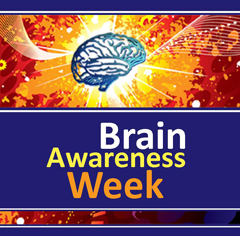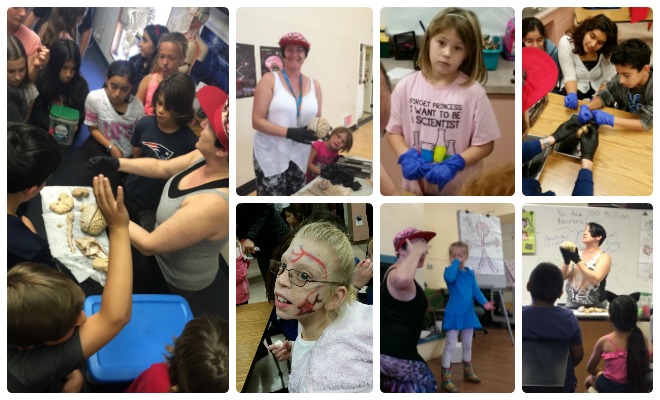|
In This Issue...
- Time to Pack: The reading list of a newcomer preparing for Budapest
- IBNS2016 Budapest: Do you have the App?
- Election Results
- Trending Science
- IBNS 2016 Budapest Tours
- Member News: Brain Awareness Week
Time to Pack: The reading list of a newcomer preparing for Budapest
By Katherine Wright
IBNS 2016 is rapidly approaching. Have you had a chance to browse the list of symposia topics? With such a wide scope of behavioral neuroscientists converging to present their research, from addiction to zebrafish, it might be difficult (especially for a first-time attendee) to know where to begin. Look no further. Below is a curated list of sections you should not miss with suggested reading to help you prep for the topic. As a disclaimer, this is the opinion of one lone graduate student with an interest in neuropsychiatric disorders, so these picks are biased in that way.
- Epigenetic regulation of motivated behaviors is chaired by Zuoxin Wang and Mohamed Kabbaj, featuring the following speakers: Isabelle Mansuy, Mohamed Kabbaj, Xin-yun Lu, Courtney Miller, and Jian Feng. This panel focuses on a wide variety of traits, including drug exposure, social motivation, and obesity. I recommend Szyf et al. (2016) for a review of epigenetic mechanisms across the lifespan (as well as transgenerational inheritance) as it relates to characterizing these mechanisms for their potential in translational science. Nestler (2014) provides an overview of recent findings from the field of drug addiction, where epigenetic mechanisms underlie neuroadaptations to drug exposure.
- Sex differences in the brain: Implications for behavioral and biomedical research, chaired by Elena Choleris, includes a panel of speakers including herself, Liisa Galea, Karyn Frick, and Farida Sohbraji. I recommend reading McCarthy (2016) and Maney (2016). The first article reviews the many ways in which sex differences are defined and characterized, whether from a molecular or societal standpoint. The second article gives examples of the ways statistical reporting and interpretation may lead to misrepresentation of research in sex differences. As an additional note, both of these reviews came from a special issue of Philosophical Transactions B of the Royal Society that has many other articles worth reading relating to sex differences in the brain.
- Behavioral and molecular bases of drug and food addiction: Similarities and differences Chaired by Jean Lud Cadet with speakers including himself, Irina N. Krasnova, Donna Calu, and Mercello Solinas, I recommend reading from Carlier et al. (2015) and DiLeone et al. (2012). Both compare and contrast food addiction and drug addiction, with the former focusing on genetic and clinical diagnostic similarities, while the latter utilizes a systems and behavioral approach to characterize these conditions.
- Stress and behavior is chaired by Samina Salim with speakers including Thomas Sedlak, Atsushi Kamiya, Samina Salim, and Victoria Risbrough. This panel covers the contribution of oxidative stress to the development of a variety of neuropsychiatric disorders. I recommend Schiavone & Trabace (2016) for an overview of the role of reactive oxygen species (ROS) in mood disorders, autism spectrum disorder, and schizophrenia. I also recommend Fraunberger et al. (2016) for a primer on the biochemistry of redox reactions and critical discussion on antioxidants as it relates to brain health.
- Individual vulnerability to addiction: Dissection of behavior, neural circuits, cellular and molecular mechanisms. Chaired by Gabor Egervari and Yasmin Hurd, speakers include David Belin, Taco De Vries, Roberto Ciccocioppo, and Gabor Egervari. I recommend reading Perry et al. (2011), which reviews literature on the neurotransmitter systems at play in different subregions of the prefrontal cortex and how they contribute to vulnerability in drug abuse and impulsivity. They focus on both clinical and preclinical data to inform better treatment options. Nielsen et al. (2012) seeks to answer the question: do epigenetic mechanisms predispose an individual to the development of drug addiction, or are they a response to addiction?
Carlier, N., Marshe, V. S., Cmorejova, J., Davis, C., & Muller, D. J. (2015). Genetic Similarities between Compulsive Overeating and Addiction Phenotypes: A Case for "Food Addiction"? Curr Psychiatry Rep, 17(12), 96. doi:10.1007/s11920-015-0634-5
DiLeone, R. J., Taylor, J. R., & Picciotto, M. R. (2012). The drive to eat: comparisons and distinctions between mechanisms of food reward and drug addiction. Nat Neurosci, 15(10), 1330-1335. doi:10.1038/nn.3202
Fraunberger, E. A., Scola, G., Laliberte, V. L., Duong, A., & Andreazza, A. C. (2016). Redox Modulations, Antioxidants, and Neuropsychiatric Disorders. Oxid Med Cell Longev, 2016, 4729192. doi:10.1155/2016/4729192
Galea, L. A., Frick, K. M., Hampson, E., Sohrabji, F., & Choleris, E. (2016). Why estrogens matter for behavior and brain health. Neurosci Biobehav Rev. doi:10.1016/j.neubiorev.2016.03.024
Maney, D. L. (2016). Perils and pitfalls of reporting sex differences. Philos Trans R Soc Lond B Biol Sci, 371(1688). doi:10.1098/rstb.2015.0119
McCarthy, M. M. (2016). Multifaceted origins of sex differences in the brain. Philos Trans R Soc Lond B Biol Sci, 371(1688). doi:10.1098/rstb.2015.0106
Nestler, E. J. (2014). Epigenetic mechanisms of drug addiction. Neuropharmacology, 76 Pt B, 259-268. doi:10.1016/j.neuropharm.2013.04.004
Nielsen, D. A., Utrankar, A., Reyes, J. A., Simons, D. D., & Kosten, T. R. (2012). Epigenetics of drug abuse: predisposition or response. Pharmacogenomics, 13(10), 1149-1160. doi:10.2217/pgs.12.94
Perry, J. L., Joseph, J. E., Jiang, Y., Zimmerman, R. S., Kelly, T. H., Darna, M., . . . Bardo, M. T. (2011). Prefrontal cortex and drug abuse vulnerability: translation to prevention and treatment interventions. Brain Res Rev, 65(2), 124-149. doi:10.1016/j.brainresrev.2010.09.001
Schiavone, S., & Trabace, L. (2016). Pharmacological targeting of redox regulation systems as new therapeutic approach for psychiatric disorders: A literature overview. Pharmacol Res, 107, 195-204. doi:10.1016/j.phrs.2016.03.019
Szyf, M., Tang, Y. Y., Hill, K. G., & Musci, R. (2016). The dynamic epigenome and its implications for behavioral interventions: a role for epigenetics to inform disorder prevention and health promotion. Transl Behav Med, 6(1), 55-62. doi:10.1007/s13142-016-0387-7
IBNS2016 Budapest: Do you have the App?
IBNS Annual Meeting, June 7-12, 2016, Kempinski Hotel, Budapest, Hungary. Hear from the best in our various fields of study, network with scientists and researchers from all over the world, present your work and enjoy the historic surroundings that Budapest, Hungary, and the Kempinski Hotel have to offer. More info at: http://www.ibnsconnect.org/meetings
Download the IBNS2016 Meeting App, to view the schedule, abstracts, network and MORE! Click HERE for more information on placing the app on any mobile device.
Election Results
IBNS 2016 Elections ended on April 25th. Thank you to all of our candidates and those who participated in the election process! The following are your new Council members:
President-Elect: F. Scott Hall
Canadian Councilor: Liisa Galea
USA Councilor: Susanne Brummelte
Student Councilor: Monica Bolton
Trending Science
In this column, we will share the latest research, interesting scientific articles and news you can use.
Lasting consequences of adolescent opiate exposure: effects on the next generation
By Fair M. Vassoler
 Prescription opiate use and abuse has increased dramatically over the past two decades, including increased use in adolescent populations. Recently, it has been proposed that use during this critical period may affect future offspring even when use is discontinued prior to conception. In the current study, we set out to test the hypothesis that preconception drug exposure would affect addiction-like behaviors in offspring. First, female rats were exposed to morphine once a day for 10 days during adolescence (post-natal day 30-39). Control females were exposed to saline. They were then maintained drug free for at least 3 weeks before being mated with drug-naïve colony males. Male and female offspring were tested for morphine reward using conditioned place preference (CPP) in adulthood. Our results showed that F1 animals whose mother was exposed to morphine as an adolescent had enhanced preferences for morphine paired environments compared to the saline controls, particularly at lower doses. In addition, we showed increased levels of mu opiate receptor in the nucleus accumbens, an area central to reward process, and decreased levels of the mu receptor in the ventral tegmental area, the area that sends dopaminergic projections to the accumbens. Taken together, the results indicate a shift in the rewarding response to opiates where the offspring of opiate experience dams are more sensitive to lower doses than the saline control offspring. The enhanced reward sensitivity may be due to the observed changes in the mu opiate receptor. The implications for human health are quite profound as this clearly demonstrates that preconception drug exposure can have effects that last into the subsequent generation. This may play a role in familial inheritance of reward-related disorders such as addiction. Prescription opiate use and abuse has increased dramatically over the past two decades, including increased use in adolescent populations. Recently, it has been proposed that use during this critical period may affect future offspring even when use is discontinued prior to conception. In the current study, we set out to test the hypothesis that preconception drug exposure would affect addiction-like behaviors in offspring. First, female rats were exposed to morphine once a day for 10 days during adolescence (post-natal day 30-39). Control females were exposed to saline. They were then maintained drug free for at least 3 weeks before being mated with drug-naïve colony males. Male and female offspring were tested for morphine reward using conditioned place preference (CPP) in adulthood. Our results showed that F1 animals whose mother was exposed to morphine as an adolescent had enhanced preferences for morphine paired environments compared to the saline controls, particularly at lower doses. In addition, we showed increased levels of mu opiate receptor in the nucleus accumbens, an area central to reward process, and decreased levels of the mu receptor in the ventral tegmental area, the area that sends dopaminergic projections to the accumbens. Taken together, the results indicate a shift in the rewarding response to opiates where the offspring of opiate experience dams are more sensitive to lower doses than the saline control offspring. The enhanced reward sensitivity may be due to the observed changes in the mu opiate receptor. The implications for human health are quite profound as this clearly demonstrates that preconception drug exposure can have effects that last into the subsequent generation. This may play a role in familial inheritance of reward-related disorders such as addiction.
Vassoler, F.M., Wright, S.J., Byrnes, E.M., 2016. Exposure to opiates in female adolescents alters mu opiate receptor expression and increases the rewarding effects of morphine in future offspring. Neuropharmacology 103, 112-121.
IBNS 2016 Budapest Tours
See the sites of Budapest, Hungary, while attending IBNS 2016...join an IBNS group tour! We are offering three tours to all attendees at group discounted pricing. Use this opportunity to see the sites just before the meeting and network with fellow attendees. Choose from a full-day tour on Monday, June 6, or a half-day tour on the afternoon of Tuesday, June 7. Interested in seeing the sites with us? Review the tours and sign up via the link:
IBNS 2016 Pre-Conference Tours
Member News: Brain Awareness Week
In this column, we share news of our members' accomplishments, career advancement, awards and honors. Submit your member news to [email protected] for our next issue.
 In celebration of Brain Awareness Week, March 14 - 20, 2016, IBNS members, Tod Kippin and Karen Szumlinski, from UCSB instructed a program during the regularly scheduled Science class at Hope Elementary School in Santa Barbara, California, USA, called "Hope for Brains!" that reached out to all 360 students from K to Grade 6. Karen also continued to run her "Brainiac" program for the 7 preschool classrooms at the Orfalea Family Childrens' Center at UCSB and hosted a Brain Booth at the Goleta Valley Girls Inc afterschool program, teaching over 150 girls in K through Grade 6. Brain Awareness activities continued later in April with an all-school program to be conducted at Santa Barbara Charter School. This is our largest Brain Awareness program yet and we hope to reach out to more schools and organizations in the upcoming years! In celebration of Brain Awareness Week, March 14 - 20, 2016, IBNS members, Tod Kippin and Karen Szumlinski, from UCSB instructed a program during the regularly scheduled Science class at Hope Elementary School in Santa Barbara, California, USA, called "Hope for Brains!" that reached out to all 360 students from K to Grade 6. Karen also continued to run her "Brainiac" program for the 7 preschool classrooms at the Orfalea Family Childrens' Center at UCSB and hosted a Brain Booth at the Goleta Valley Girls Inc afterschool program, teaching over 150 girls in K through Grade 6. Brain Awareness activities continued later in April with an all-school program to be conducted at Santa Barbara Charter School. This is our largest Brain Awareness program yet and we hope to reach out to more schools and organizations in the upcoming years!

Please send in your member news for our next edition!
|